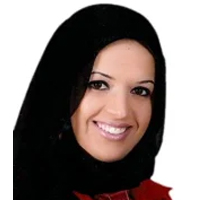Trans-abdominal cervical cerclage revisited
Published on: 18th June, 2019
OCLC Number/Unique Identifier: 8165593316
Changes in contemporary obstetric and gynaecological practice in relation to ultrasound cervical screening during pregnancy, the treatment of intra-epithelial cervical neoplasia and laparoscopic surgery have resulted in an increased utilization of trans-abdominal cervico-isthmic cerclage in an attempt to reduce the incidence of mid-trimester and early preterm birth in women with repeated pregnancy loss.
Effect of ginger flour supplementation on fermented millet flour ‘ibyer’ anti-diabetic and biochemical properties
Published on: 29th December, 2020
OCLC Number/Unique Identifier: 8899338938
A mucoso-respiratory highly contagious disease; COVID-19, has led to tremendous global health and economy damages. This virus could be dampened through home use of fermented bio food material. Fermented millet flour (ibyer) is an indigenous non-alcoholic gruel made from cereals either (maize, sorghum and millet). It is prepared by cooking reconstituted cereal flour or wet milled paste with water. In this study, fermented millet fl our supplemented with ginger powder blends were formulated in the ratio 100:0, 95:5, 90:10, 85:15, 80:20, 75:25 and 70:30 for the production of gruel. The blends were subjected to feeding trial experiment using wistar albino rat. Results analysis revealed that Serum cholesterol was less than 200 mg/dl. The fasting blood glucose was also within the recommended range (67.7 - 125.0 mg/dl). The biochemical parameters were within recommended range, total serum protein ranged from 5.82-7.06 g/L, Alanine aminotransferase ranged from 28.53 to 41.13 iu/L, Aspartate aminotransferase ranged from 28.50 to 48.66 iu/L. The albino rats showed slight increase in body weight throughout the experimental period, ranging from 78.67 -103.80 g. The experiment shows that the diet did not have any adverse effect on the experimental animals and were within the recommended range hence a good anti diabetic blend and has excellent biochemical profile properties for homes use.
Epidemiological and Clinical Aspects of Staphylin Dermatitis: A Study of 30 Cases at the Dermatology Hospital in Bamako
Published on: 15th December, 2023
Staphylin dermatitis is an acute, irritant, contact dermatitis caused by Pederin, a haemolymphatic fluid released when staphilinidae are crushed against the skin [1]. This is a serious condition, with epidemics and certain localizations, especially in the eyes, which can lead to blindness.
Kidney Biopsy in Autosomal Dominant Polycystic Kidney Disease
Published on: 19th December, 2023
Proteinuria is an easily quantified biomarker of kidney disease and often a sign of glomerular pathology. Significant proteinuria is uncommon in cystic kidney diseases and should be further evaluated to exclude the presence of another simultaneous kidney disease. While renal biopsy is a valuable part of the diagnostic evaluation of proteinuria, careful consideration of risks and benefits is necessary before proceeding in a patient with bilateral renal cysts. We report the case of a man with Polycystic Kidney Disease (PKD) who was found to have nephrotic-range proteinuria. An ultrasound-guided kidney biopsy revealed evidence of Focal Segmental Glomerulosclerosis (FSGS), which was attributed to hyperfiltration-related injury in the context of extensive kidney cysts. Genetic testing did not reveal a cause of FSGS and showed a variant of uncertain significance in PKD1. We use this case to highlight three important issues that are applicable to patients with PKD: the role of diagnostic evaluation for proteinuria in cystic kidney disease, the feasibility of kidney biopsy despite the presence of bilateral renal cysts, and the roles and limitations of genetic testing in cystic kidney disease and FSGS.
Olfactory Dysfunction in Sports Players following Moderate and Severe Head Injury: A Possible Cut-off from Normality to Pathology
Published on: 30th November, 2016
OCLC Number/Unique Identifier: 7286352765
Concussion occurs with some frequency in a variety of sports. Any trauma to the brain can also result in temporary or chronic olfactory dysfunction. The relationship between sports concussion and olfactory dysfunction is not well studied, nor do we know whether only more severe injuries result in smell impairments. Three sports players who had previously experienced either a moderate or severe concussion were compared to matched controls. Only the player with a previous severe concussion had a current olfactory impairment. We tentatively suggest that the distinction between moderate and severe concussion may represent a possible cut-off between the presence and absence of olfactory impairment in sports players.
Naphazoline nitrate treat the Frey effect of microwave and other sonic weapon’s damages in Human’s Internal, Endogenous Organs
Published on: 1st February, 2019
OCLC Number/Unique Identifier: 8017063333
State Department had evacuated a number of Americans from the U.S. consulate in Guangzhou, China after they experienced unexplained health issues. A group of U.S. diplomats stationed in China have been brought back to the states after being inflicted by a mystery illness that reportedly resembles the brain injuries previously suffered by staff in Cuba. At the end of the December 2018 we have found a medicine fully treating the damages caused the Frey Effect of Microwave and other types of Sonic Weapons in Human’s internal, endogenous organs. I am proposing to use Naphasoline nitrate, (former) nasal decongestant, to treat Carcinogenesis of the Human’s internal, endogenous organs caused by Sonic Weapons through the release and cleaning of the Lymphatic ways in patients with colorectal, colon, pancreatic, breast, etc., cancer. I have proved this healing effect of the Naphazoline nitrate on myself during treatment in last months of the year 2018.
An exceptional case of bilateral vestibular areflexia complicating acute otitis media
Published on: 2nd July, 2020
OCLC Number/Unique Identifier: 8627247898
Introduction: Bilateral vestibular areflexia is a rare pathological entity whose most frequent etiology is drug ototoxicity. We report an unusual case of bilateral vestibular areflexia complicating acute otitis media through which we raise the difficulties of diagnosis and therapeutic management of this pathology.
Case Report: 57-year-old Tunisian patient who consults for a loss balance associated with earache and hearing loss. Initial clinical examination revealed bilateral acute otitis media with a right harmonious vestibular syndrome and normal neurological examination. The diagnosis of post-otitis labyrinthitis was retained. The patient was put on antibiotics and corticosteroids. The evolution was marked by the persistence of instability in darkness and oscillopsia; vestibular explorations concluded with bilateral vestibular areflexia. MRI concluded to posterior labyrinthitis and eliminated central neurological involvement. The patient was kept under betahistine. The tympanic cavity was drained by a tympanic aerator on both sides. Vestibular rehabilitation was started quickly. Gradual improvement was obtained of autonomy with persistent oscillopsia.
Conclusion: Bilateral vestibular areflexia poses diagnostic problems based on anamnestic and clinical arguments and vestibular explorations. The therapeutic management is delicate, vestibular reeducation occupies a primordial place.
A case of Pulmonary Tuberculosis complicated by Pulmonary Thromboembolism
Published on: 14th March, 2020
OCLC Number/Unique Identifier: 8633817133
We report a case of pulmonary embolism complicated with pulmonary tuberculosis. A 48-year-old woman suffered from pulmonary tuberculosis more than 6 years without formal treatment. Recently, she went to hospital because of “chest tightness and dyspnea”, and died in the process of admission to hospital. Pulmonary embolism was found by autopsy and histological examination. We analyzed the relationship between pulmonary tuberculosis and pulmonary thromboembolism and the problems we should pay attention to in forensic pathology.
Nanotherapeutic agent for cancer: Miracle or catastrophe
Published on: 28th June, 2019
OCLC Number/Unique Identifier: 8172439175
Nanotechnology is a smart technology in the field of biomedical engineering used for the diagnosis and treatment of diseases. Nanodrugs provide better encapsulation of drug and efficiency at low dosage to kill the targeted tissue/cells. However, the chances of chronic toxicity and high cost of treatment limits its applicability [1]. To overcome these problems still, the experts of the scientific community have been working on it, to design the best one and cost-effective treatment for the human welfare.
A Life-threatening Case of Giant Bilateral Renal Angiomyolipoma: A Case Report
Published on: 18th June, 2024
Renal angiomyolipoma (AML) is a rare tumor with an incidence of 0.3% - 3%.We reported a case of a 41-year-old male patient who presented with gross hematuria and hemorrhagic shock, due to a right giant angiomyolipoma he underwent urgent right nephrectomy by subcostal laparotomy, total weight of the mass was 6 Kg, histological examination concluded in a renal angiomyolipoma.Treatment of renal AML depends on the clinical presentation, tumor size, and single or multiple lesions: single small (< 4 cm) asymptomatic lesions require only clinical and radiological follow-up, however giant symptomatic (hematuria), life-threatening masses require urgent multidisciplinary treatment and especially surgery.Giant renal bilateral AML is very rare, conservative treatment in the absence of hemorrhage should always be first proposed to preserve renal function as possible.




